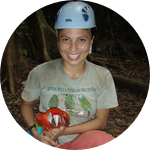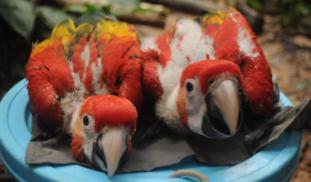Please wait...
About This Project
Scarlet Macaw populations are declining due to illegal trade and habitat loss 1, 2. Unfortunately, macaws lay 2-4 eggs, but fledge only one/two chicks, letting the others starve to death. Last year we used chick fostering to save 11 chicks from starvation. This year we will refine our techniques to make them better and simpler, to encourage other parrot conservation projects to use these techniques to aid the recovery of endangered species of macaws & parrots throughout the Americas and beyond.
More Lab Notes From This Project

Browse Other Projects on Experiment
Related Projects
How do polar bears stay healthy on the world's worst diet?
Polar bears survive almost entirely on seal fat. Yet unlike humans who eat high-fat diets, polar bears never...
Uncovering hidden insect diversity associated with a likely undescribed gall-forming midge
Does a likely undescribed species of gall-forming midge (pers. comm. Ray Gagné) on Eriodictyon plants (Yerba...
Macrofungi of the California archipelago
The eight islands of the California Archipelago are a well-studied biodiversity hotspot — but we know almost...





